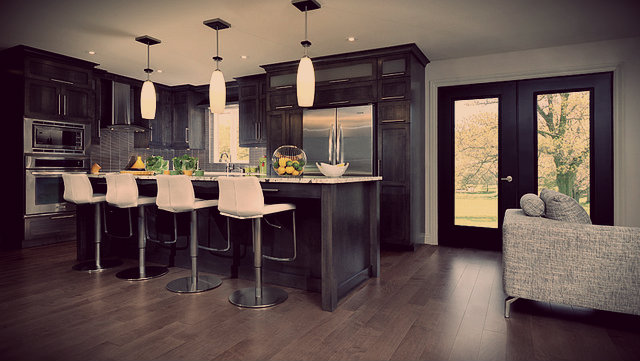 Make the most of your kitchen
Make the most of your kitchen
Your kitchen is probably one of the most used areas of your home. With all the storage that’s required to keep your utensils and cooking apparatus in order, it can easily look over burdened. Squeezing so many things into one room always presents problems with interior décor. While colour may seem pretty low down on your list of priorities, it could completely transform the way in which you view your kitchen.
If you’re planning on decorating your kitchen, feel free to use these colour coordination tips to your advantage.
The 10-30-60 Rule
It’s common practice for professional interior designers to follow the 10-30-60 rule. It’s one of the most basic principles of design and is just as relevant in your kitchen as it is anywhere else in your home. The 10-30-60 rule helps you create a professional grade of colour distribution.
In order to follow the rule you need three colours: your dominant colour, secondary colour and accent colour. The dominant colour should be 60% of the space and is usually used to cover the walls; however, in a kitchen this can be replaced for cabinetry. The secondary colour should cover 60% of the space and is usually reserved for work surfaces. The accent colour should cover 10% of the space and is presented through vivid colours. Typical kitchen accents include flowers, fruit and small appliances, etc.
While the 10-30-60 rule isn’t essential, if you pick the right colour scheme it will create the perfect balance of colour throughout your kitchen.
Use the Colour Wheel
The colour wheel allows you to figure out exactly what colour schemes will work well together. When you pick your three colours keep the 10-30-60 rule in mind. To download an interactive colour wheel visit Colour Wheel Harmony.
A split-complimentary colour scheme combines two opposites of the colour wheel. These colours form the dominant and secondary colour. The accent colour can be anything you choose. A complimentary colour scheme takes a slightly different approach. Instead of using opposites on the colour wheel it fuses two hues of the same colour to use as the dominant and secondary colour. These hues are usually located directly beside each other. A triadic colour scheme combines three high-contrast colours and is a little more daring than the others. For a triadic colour scheme, pick two colours from the cool side of the colour wheel for the dominant and secondary colours; and one from the warm side for the accent.
Feel free to experiment with different accents. One of the primary benefits of using any of these techniques is that the accent colour can literally change the whole vibe of your kitchen.
Adjust your Layout
The layout of your kitchen can heavily affect colour. Make sure that your chosen colours are balanced so they’ll blend well together. Too much in one space will not only look odd, but will divert focus from the whole picture.
Try to evenly distribute your colours. Your accent should be sparse, yet present throughout your whole kitchen. For example, if you have a yellow fruit bowl on one side of your kitchen; place a yellow flower on the other side to establish a sense of continuity. Or if you’re using cabinetry to establish your dominant colour, make sure everything isn’t installed on one wall, but spread out across all four sides.
Balance is crucial and sometimes simply moving an item used for the accent is all that’s required to give your kitchen a whole new vibe.
Conclusion
Remember, when it comes to interior design these “rules” are merely guidelines. Feel free to unleash your creative side and go against the grain if you think it will work. There’s absolutely nothing wrong with amending these techniques if you want to explore other options. Every kitchen is different and should represent your own style and personality. If you need to “break the rules” to convey this, then so be it. Simply use these tips as basic guidelines to get you started.
Before you start designing the layout and colour scheme of your kitchen, get some inspiration from the Nicholas Anthony case studies. You may find a colour scheme that will fuse perfectly with your kitchen. Looking at photographs taken by other interior designers is the perfect place to start.

